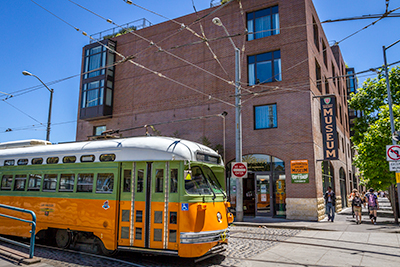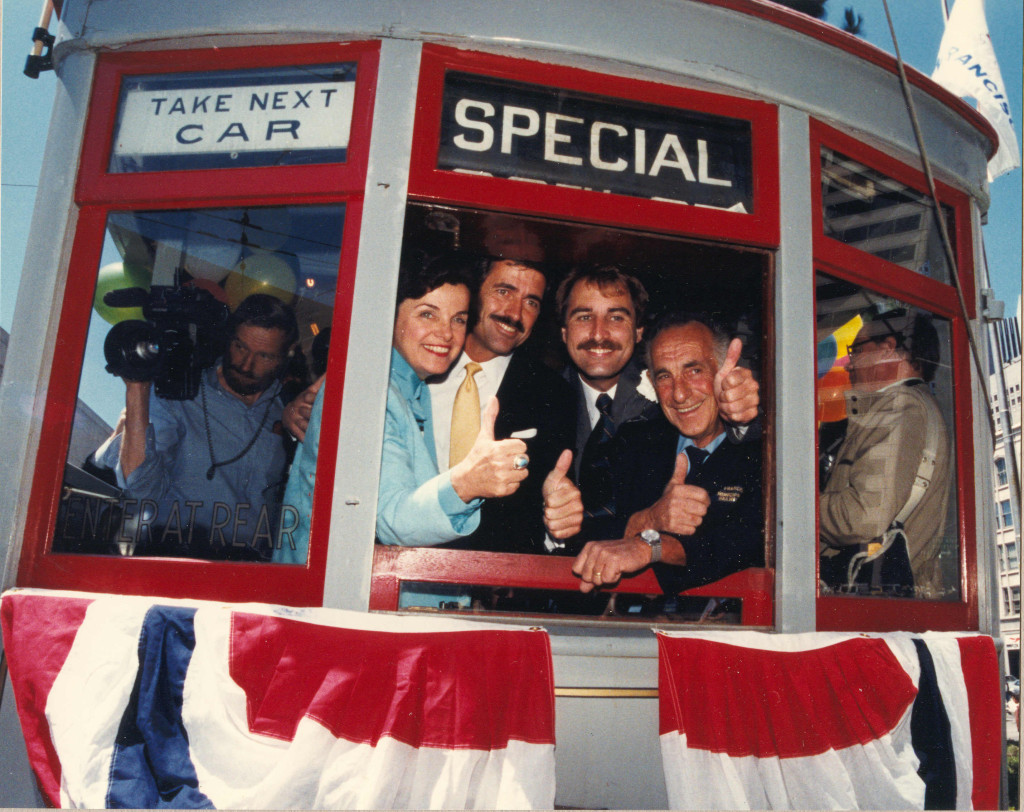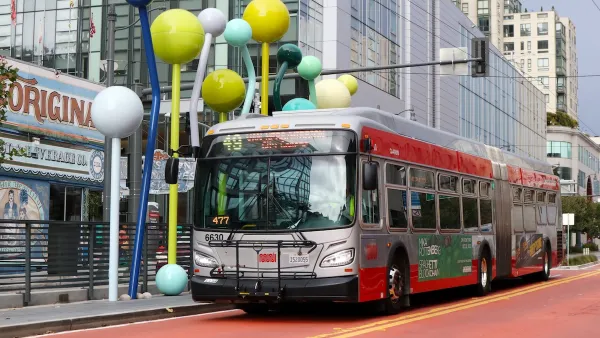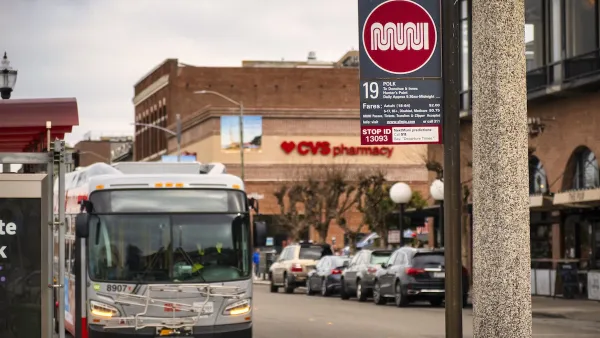As Joe Fitzgerald Rodriguez of the San Francisco Examiner explains, the 'E' Line has only been over three decades in the making. Credit goes greatly to former mayor, now U.S. Senator Diane Feinstein, and the tireless work of committed advocates.
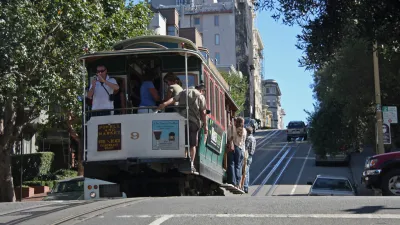
San Francisco's historic or vintage streetcar line is about to double in size. The crowded F Line, operating from Castro Street to Fisherman's Wharf, will soon be sharing streetcars and tracks with its sister line, the E-Embarcadero Line, operating from the Caltrain station, past AT&T (San Francisco Giants) ballpark, merging with the F Line at the Ferry Building, and continuing to Fisherman's Wharf.
Credit: San Francisco Railway Museum • On the F-Line • Steuart St. Stop
"Originally conceived by San Francisco Tomorrow in the 1970s, it wasn’t until [U.S. Sen. Dianne Feinstein, then-San Francisco mayor] backed the project in the ’80s that the trolley’s future was secured," writes Joe Fitzgerald Rodriguez for the San Francisco Examiner.
"It takes a tremendous amount of patience to make dreams come true in San Francisco,” said Rick Laubscher, president of the Market Street Railway Association, a "non-profit group dedicated to the acquisition, restoration and operation of historic transit vehicles in the city," according to the San Francisco Municipal Transportation Authority (SFMTA), the city's public transit operator.
Rodriguez does an excellent job of explaining the history behind the E Line, crediting those who made it happen; so much so that Market Street Railway wrote their own article, "Great E-line Startup Piece in The Examiner." The new E Line will operate on weekends only beginning August 1 with daily service to start next year. Joe Fitzgerald Rodriguez fittingly provides the recent history for the historic line.
"Right after this shot was snapped, Mayor Dianne Feinstein (left) took the controls of Muni Car No.1 and personally piloted it down Market Street to open the first Trolley Festival in June 1983. That success led to the permanent F-line, and now the E-line." Credit: Market Street Railway.
Feinstein's role can not be downplayed. Just as Mayor Michael Bloomberg played an instrumental role in the creation of New York's High Line after his predecessor, Mayor Rudolph Giuliani, tried to kill it, as noted here, Feinstein, working with MTA and Market Street Railway got the F Line, and now the E Line, launched.
“I congratulate the SFMTA on finally achieving this milestone, one we envisioned when I was Mayor,” Feinstein wrote in an email to the Examiner. “Most especially, I am extremely proud of the Market Street Railway Association, led by Rick Laubscher, for their tireless advocacy; without their support, this never would have come to fruition. Now, onto the next challenge — extend the line from Fisherman’s Wharf to Fort Mason!”
On that last note, she refers to an extension from Fisherman's Wharf "through an old tunnel that links Aquatic Park to Fort Mason." The Environmental Impact Statement [PDF] has been completed.
Unlike other historic or replica streetcar lines, San Francisco's streetcars operates more like the oldest public transit in the United States, the New Orleans streetcars, as it serves the local population as well as tourists, as explained here last August.
FULL STORY: Muni set to roll out long-planned waterfront streetcar, the E-line

Analysis: Cybertruck Fatality Rate Far Exceeds That of Ford Pinto
The Tesla Cybertruck was recalled seven times last year.

National Parks Layoffs Will Cause Communities to Lose Billions
Thousands of essential park workers were laid off this week, just before the busy spring break season.

Retro-silient?: America’s First “Eco-burb,” The Woodlands Turns 50
A master-planned community north of Houston offers lessons on green infrastructure and resilient design, but falls short of its founder’s lofty affordability and walkability goals.

Test News Post 1
This is a summary

Analysis: Cybertruck Fatality Rate Far Exceeds That of Ford Pinto
The Tesla Cybertruck was recalled seven times last year.

Test News Headline 46
Test for the image on the front page.
Urban Design for Planners 1: Software Tools
This six-course series explores essential urban design concepts using open source software and equips planners with the tools they need to participate fully in the urban design process.
Planning for Universal Design
Learn the tools for implementing Universal Design in planning regulations.
EMC Planning Group, Inc.
Planetizen
Planetizen
Mpact (formerly Rail~Volution)
Great Falls Development Authority, Inc.
HUDs Office of Policy Development and Research
NYU Wagner Graduate School of Public Service
























